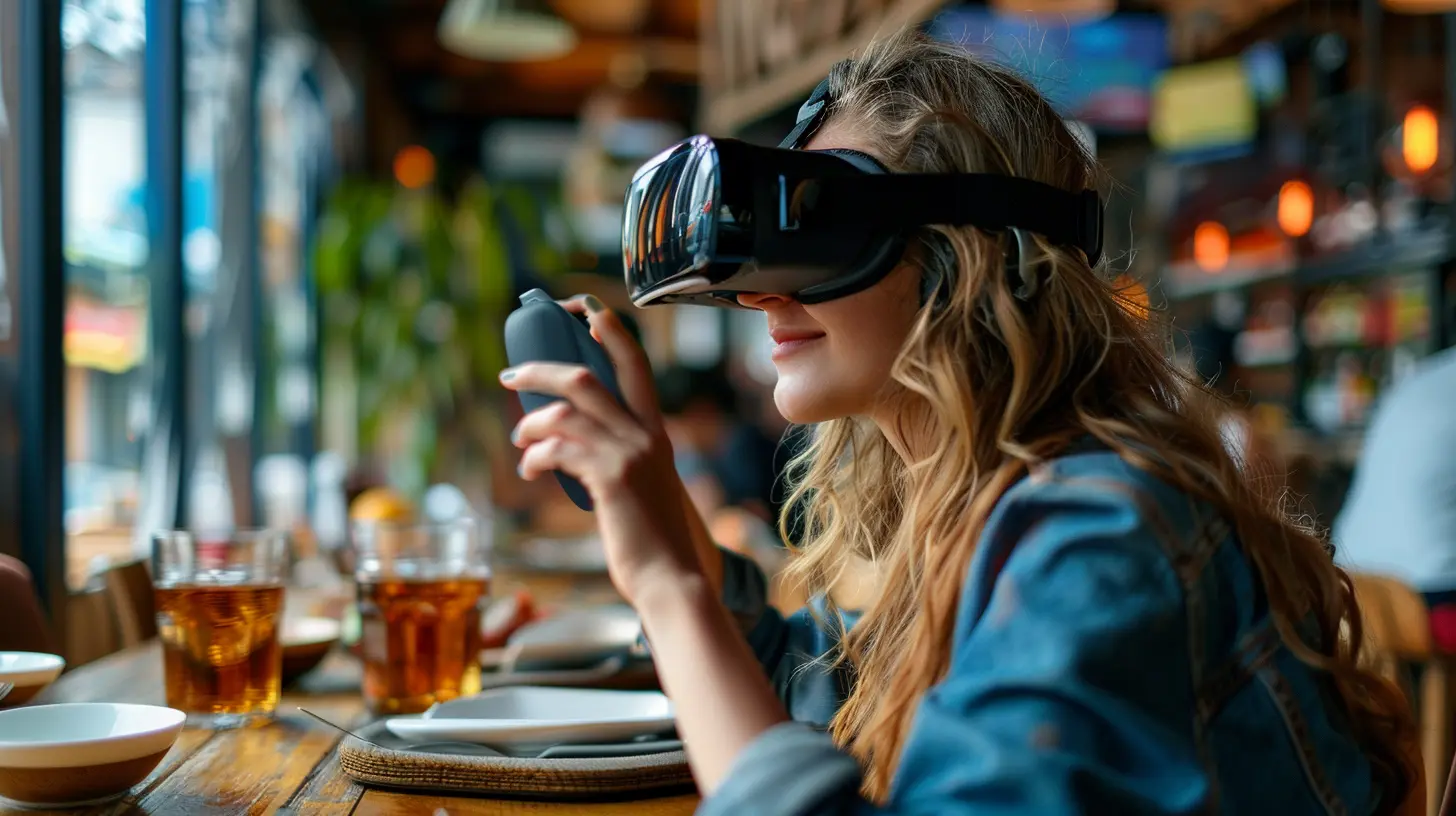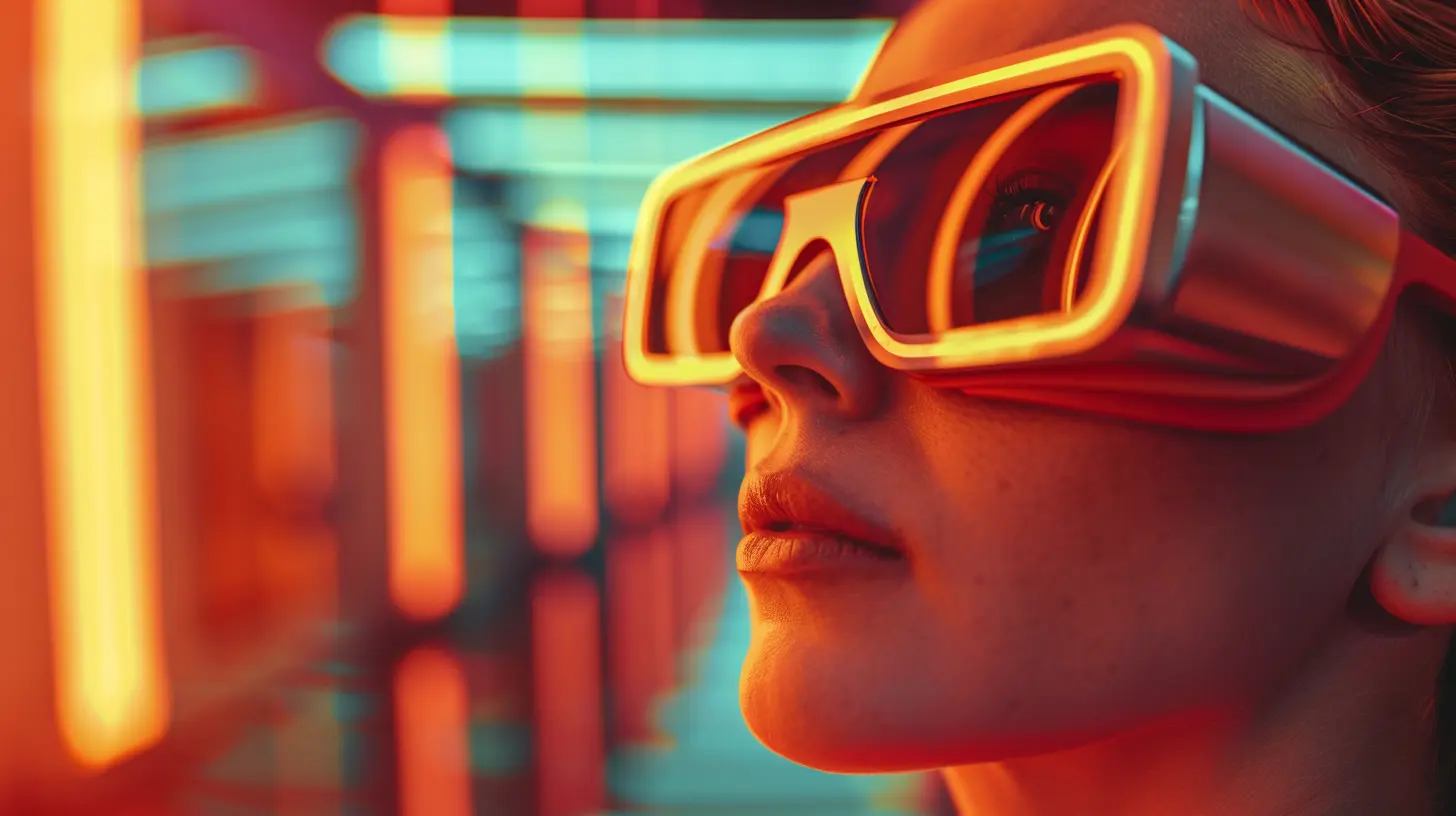Exploring the Role of Virtual Reality in E-Commerce
3 October 2025
The e-commerce industry is evolving at an unprecedented pace. With every passing year, new technologies reshape how businesses interact with consumers. Among these innovations, Virtual Reality (VR) stands out as a game-changer. Imagine walking into a virtual store, picking up items, examining them from all angles, and even trying them on—without leaving your couch. Sounds futuristic? Well, not anymore!
Virtual Reality has moved beyond the realm of gaming and entertainment, making significant strides in online shopping. But how exactly is VR transforming e-commerce? And what does it mean for businesses and consumers alike? Let’s dive into the fascinating role of VR in the online shopping experience. 
How Virtual Reality Enhances Online Shopping
Traditional e-commerce has always had one major drawback—customers can't physically interact with products before making a purchase. Sure, product descriptions, high-resolution images, and even videos help, but they don’t fully replace a hands-on experience.That’s where Virtual Reality steps in. It bridges the gap between physical and online shopping, offering an immersive experience that mimics real-life interactions. Here’s how:
1. Virtual Storefronts: The Future of Shopping
Think of a VR-powered e-commerce store as a virtual mall. Instead of scrolling through an endless list of products, customers can "walk" through aisles, pick up items, and inspect them from every angle. It’s similar to traditional shopping—just without the hassle of traffic, long lines, or crowded spaces.Many major retailers, such as IKEA and Alibaba, have already adopted VR-powered shopping experiences, giving customers a realistic store-like feel from the comfort of their homes.
2. Try Before You Buy: VR Product Testing
One of the biggest risks of online shopping is uncertainty. What if the dress doesn’t fit? Will that couch really match my living room decor? VR solves this by allowing customers to "try before they buy."For example:
- Fashion Retailers: Virtual fitting rooms let shoppers see how clothes look on a 3D avatar of themselves.
- Furniture Stores: With VR, customers can place virtual furniture in their home spaces and visualize how it blends with the decor.
- Automobile Industry: Car brands use VR to give potential buyers a 360-degree experience of sitting inside a vehicle before making a purchase decision.
3. Immersive Product Demonstrations
Some products require hands-on experience to see their full potential. With VR, brands can offer interactive product demos that allow customers to engage with items as if they were using them in real life.For example, a company selling coffee machines can create a virtual experience where customers "brew" a cup of coffee to see how the machine works. This kind of engagement makes it easier for customers to understand the product and fosters a deeper connection with the brand. 
The Business Benefits of VR in E-Commerce
While VR is transforming the shopping experience for consumers, businesses stand to benefit just as much. Here’s how:1. Increased Customer Engagement and Satisfaction
Customers are more likely to spend time in a virtual store than on a traditional e-commerce website. The interactive nature of VR keeps them engaged longer, increasing the chances of making a purchase.Moreover, when shoppers can virtually experience products before buying, they are more likely to be satisfied with their purchases—leading to fewer returns and higher customer retention rates.
2. Competitive Advantage in a Crowded Market
E-commerce is a cutthroat industry. To stand out, businesses need to innovate constantly. Implementing VR technology gives brands an edge by offering something unique that traditional online stores can’t—a memorable, immersive shopping experience.3. Better Product Visualization Reduces Returns
A major challenge for e-commerce businesses is product returns due to mismatched customer expectations. VR eliminates this issue by offering accurate product visualization, reducing the likelihood of buyers changing their minds after receiving their orders.4. Enhanced Brand Loyalty
Customers remember experiences more than transactions. A well-designed VR shopping experience leaves a lasting impression, increasing the likelihood of repeat purchases. When customers associate a brand with cutting-edge technology and convenience, they become more loyal over time.
Challenges of Implementing VR in E-Commerce
While VR presents endless possibilities, it’s not without its challenges. Businesses looking to integrate VR into their e-commerce strategy should consider some key roadblocks.1. High Development Costs
Creating a fully immersive VR shopping experience requires significant investment. From developing 3D environments to ensuring seamless integration with existing e-commerce platforms, the costs can be high. However, as VR technology advances, these costs are gradually decreasing.2. Hardware Limitations for Consumers
Not all consumers own VR headsets. While smartphones and computers can provide limited VR experiences via 360-degree views, the full potential of VR is best experienced with dedicated hardware—something not every shopper has access to.3. User Adaptability
As exciting as VR shopping sounds, not every customer is ready to dive into it. Some prefer the simplicity of traditional e-commerce, while others may take time to adapt. Businesses must strike a balance between offering immersive VR experiences and ensuring their websites remain user-friendly for all customers.4. Technical Glitches and Performance Issues
For VR shopping to be effective, it must be smooth and glitch-free. Lagging, poor-quality graphics, or long loading times can drive potential customers away rather than attract them. Ensuring seamless performance requires robust technology and continuous optimization.
The Future of Virtual Reality in E-Commerce
Despite the challenges, the future of VR in e-commerce looks incredibly promising. As technology evolves, VR hardware will become more affordable, making it accessible to a wider audience. Furthermore, advancements in Artificial Intelligence (AI) and Augmented Reality (AR) will complement VR, creating even more seamless shopping experiences.Major brands such as Amazon and Walmart are already experimenting with VR shopping concepts, indicating that this trend is here to stay. In the next decade, we could see fully integrated virtual marketplaces where customers can shop, interact, and even socialize—all within a digital environment.
What Does This Mean for Retailers?
Retailers who embrace VR early will have the upper hand in capturing tech-savvy consumers. Investing in VR now could future-proof businesses, ensuring they stay relevant in an increasingly digital world.Whether it’s virtual dressing rooms, interactive product demos, or immersive storefronts, one thing is clear—VR is redefining e-commerce, and the businesses that adapt will thrive in this new era of digital shopping.
Final Thoughts
Virtual Reality is not just a passing trend in e-commerce—it’s a revolutionary shift. It combines the best of both worlds: the convenience of online shopping and the immersive experience of physical stores. While there are challenges to overcome, the benefits far outweigh the hurdles.As technology progresses, VR will play an even bigger role in how we shop online. For businesses, now is the time to explore, invest, and innovate. Because in the not-so-distant future, virtual shopping might just become the "new normal.
all images in this post were generated using AI tools
Category:
E CommerceAuthor:

Adeline Taylor
Discussion
rate this article
1 comments
Vireo Sanders
This article offers an insightful look into how virtual reality is transforming the e-commerce landscape. By enhancing user experiences and providing immersive shopping environments, VR has the potential to reshape consumer behavior and drive sales in innovative ways. Great read!
October 21, 2025 at 11:25 AM

Adeline Taylor
Thank you for your thoughtful feedback! I'm glad you found the insights on VR's impact in e-commerce valuable.


